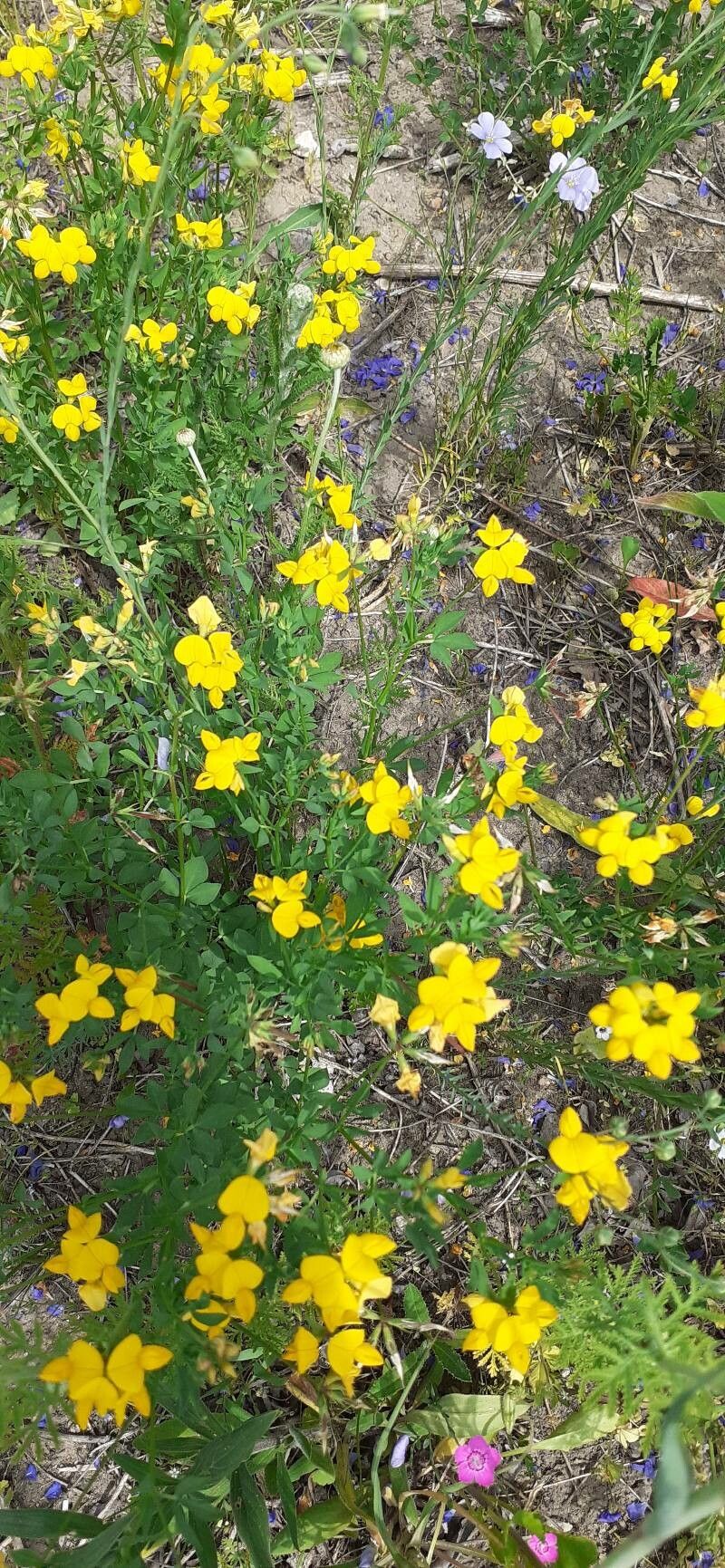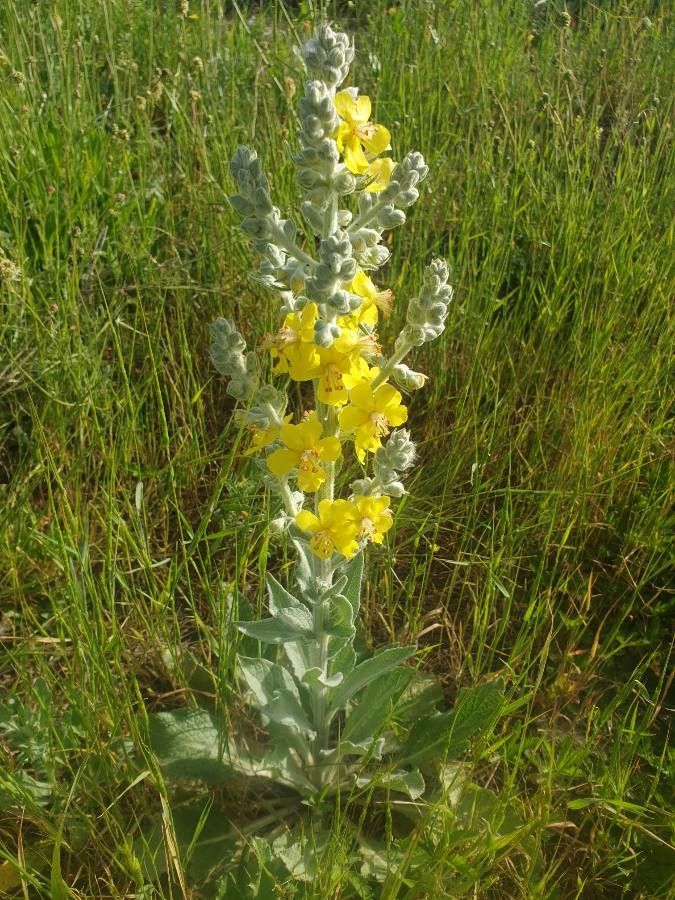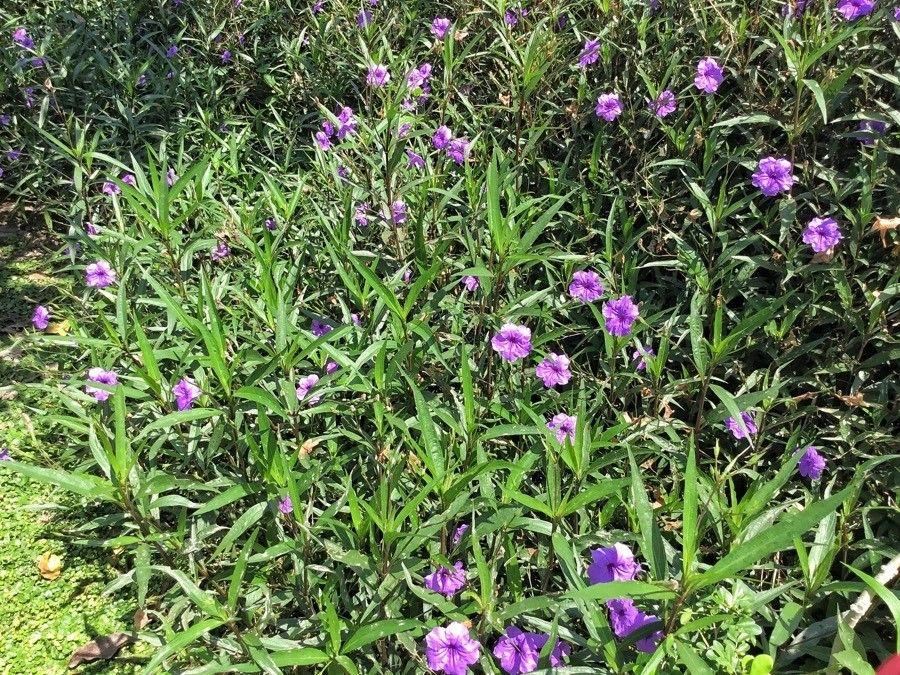## Greater Bird's-Foot Trefoil: A Comprehensive Guide
Greater Bird's-Foot Trefoil (*Lotus corniculatus*), a member of the Fabaceae (legume) family, is a charming and versatile plant found in diverse habitats across the globe. Its cheerful yellow flowers and distinctive, bird's-foot-shaped seed pods make it a welcome addition to meadows, gardens, and even pastures. This guide will delve into its characteristics, cultivation, and ecological significance.
### Identification
Recognizing Greater Bird's-Foot Trefoil is relatively easy. Look for its bright yellow, pea-like flowers, often arranged in umbels (clusters) of 3-8 blossoms. The leaves are palmate, composed of five leaflets, giving them a distinctive, finger-like appearance. The seed pods, which follow the flowers, are crucial for identification; they are slender, curved, and resemble a bird's foot, hence the common name.
### Habitat and Growth
Greater Bird's-Foot Trefoil thrives in a variety of conditions, exhibiting remarkable adaptability. It's commonly found in meadows, pastures, roadsides, and open woodlands. It tolerates a wide range of soil types, though it prefers well-drained soils. This species is highly adaptable to both full sun and partial shade, exhibiting robust growth in both scenarios. Its tolerance to drought conditions also makes it a resilient choice for less water-intensive landscaping.
### Cultivation and Care
Cultivating Greater Bird's-Foot Trefoil is straightforward, even for beginner gardeners. Propagation can be achieved through seed sowing, ideally in spring or autumn. Prepare the soil by removing weeds and ensuring good drainage. Sow seeds directly into the prepared soil, covering them lightly. Consistent moisture is crucial during germination, after which the plant becomes fairly drought-tolerant. Minimal fertilization is usually required, as legumes are known for their nitrogen-fixing capabilities, enriching the soil naturally.
### Ecological Importance
Greater Bird's-Foot Trefoil plays a significant role in various ecosystems. As a legume, it enriches the soil with nitrogen, benefiting neighboring plants. Its flowers are an important nectar source for pollinators, such as bees and butterflies. The seeds provide a food source for birds and other wildlife. Furthermore, this plant is often included in wildflower mixes intended to support biodiversity and improve soil health.
### Potential Considerations
While generally considered a beneficial plant, it's important to note that Greater Bird's-Foot Trefoil can become somewhat aggressive in some environments. Its ability to self-seed readily might lead to its spread beyond desired areas, so careful consideration of its planting location is recommended. In some regions, it is considered an invasive species; research the status of this plant within your specific geographic location before introducing it to your garden or landscape.
### Conclusion
Greater Bird's-Foot Trefoil is a delightful and ecologically beneficial plant that offers a blend of beauty and practicality. Its adaptability, low-maintenance requirements, and contribution to biodiversity make it a worthy choice for gardeners and conservationists alike. By understanding its characteristics and growth habits, you can successfully integrate this charming legume into your landscape, enhancing its aesthetic appeal and supporting local ecosystems.
Greater Bird's-Foot Trefoil: Guide & Care

Frequently Asked Questions
How to grow Greater Bird's-Foot Trefoil?
Sow seeds directly into well-drained soil in spring or autumn. Ensure consistent moisture during germination. Minimal fertilization is needed.
Is Greater Bird's-Foot Trefoil invasive?
In some regions, yes. Its ability to self-seed readily can lead to its spread. Research its status in your specific area before planting.


